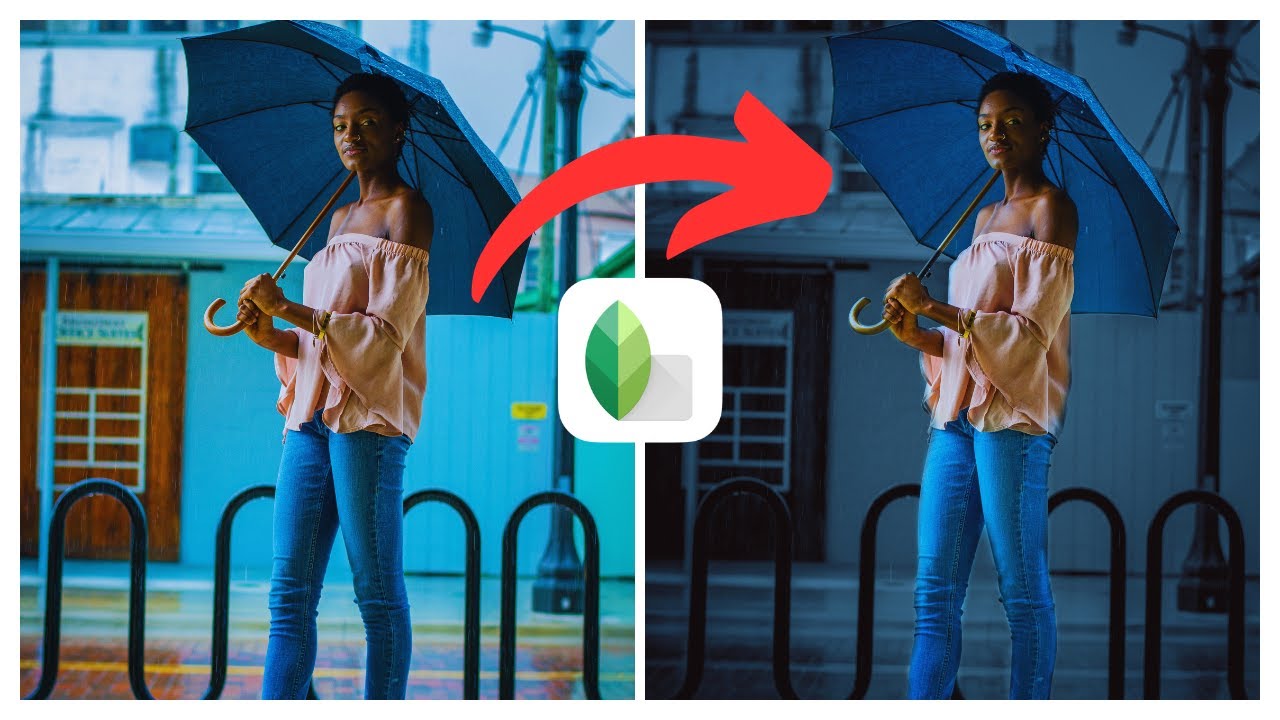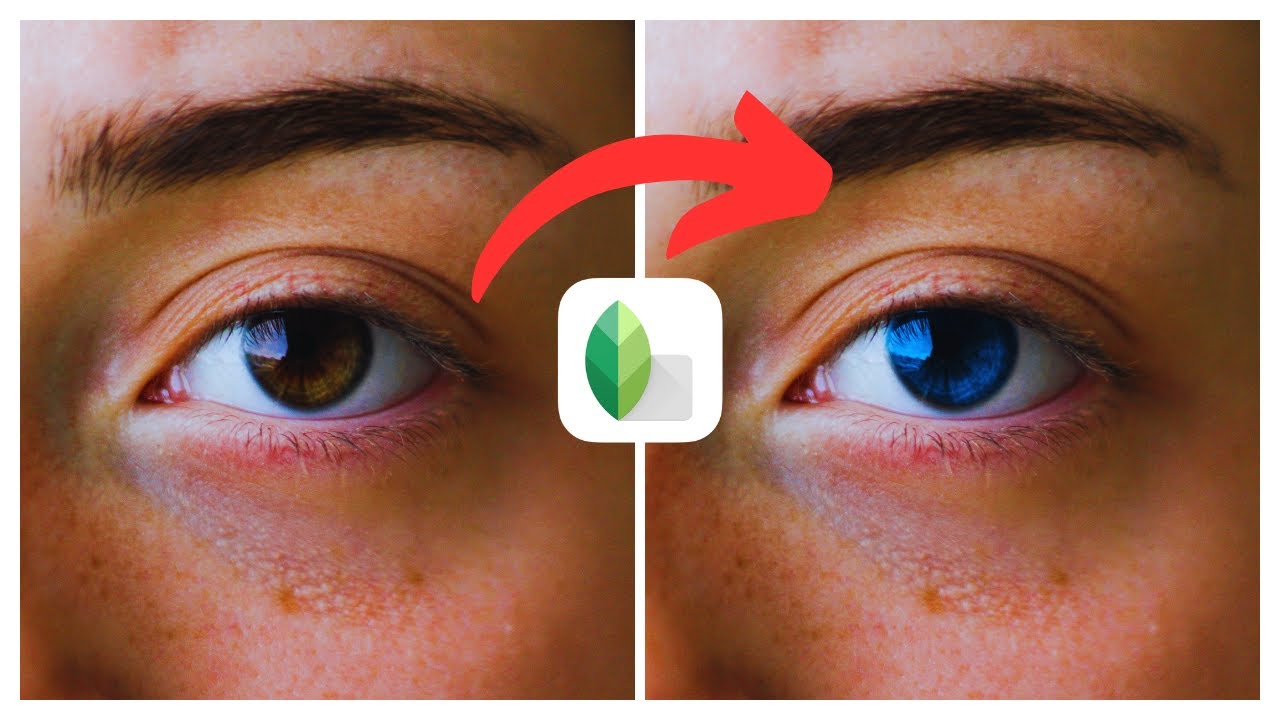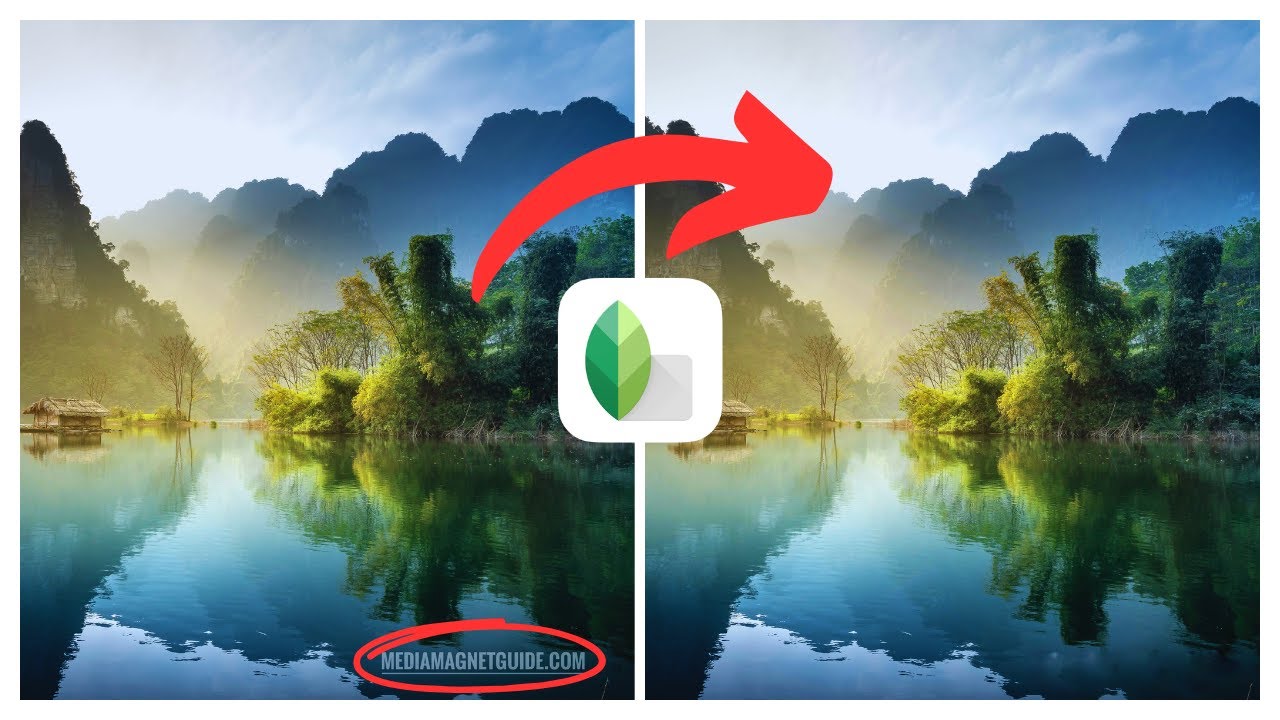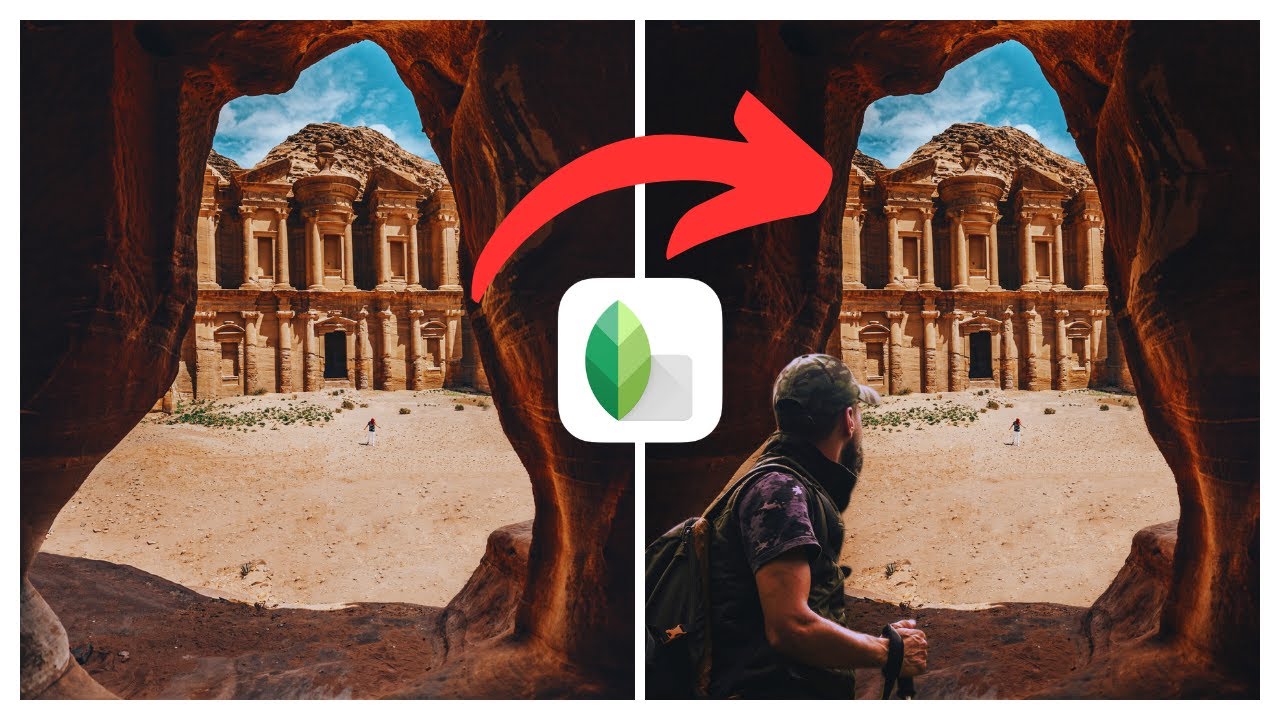In the video titled “How to Create Dark and Blue Effect in Snapseed | (iOS & Android)”, presented by Media Magnet Guide, you will learn the step-by-step process to achieve a dark and blue effect in your photos using the Snapseed app on both iOS and Android platforms. By following these instructions, you can add a cool and mysterious vibe to your images, enhancing their overall visual appeal. The video emphasizes the user-friendly nature of Snapseed, which offers a wide range of editing tools and filters, allowing you to easily enhance and transform your photos. Whether you are a beginner or have advanced editing skills, Snapseed provides creative freedom for anyone looking to elevate their photography game.
Understanding Snapseed
What is Snapseed?
Snapseed is a powerful and user-friendly photo editing app developed by Google. It provides users with a wide range of editing tools and filters to enhance and transform their photos with ease. Whether you’re a beginner or an advanced photographer, Snapseed offers creative freedom to level up your photography game.
Snapseed: An Overview
Snapseed offers an extensive range of features and tools that cater to the needs of photographers of all levels. From simple adjustments to advanced editing, the app provides a seamless editing experience. It allows users to edit their photos with precision and accuracy, resulting in stunning images that are visually appealing.
Key Features of Snapseed
Snapseed offers a variety of key features that set it apart from other photo editing apps. Some of its notable features include:
- Tools and filters: Snapseed offers a wide range of tools and filters to enhance the appearance of your photos.
- Selective editing: This feature allows users to apply edits selectively to specific areas of an image, giving them precise control over the final result.
- Healing brush: The healing brush tool enables users to remove unwanted objects or blemishes from their photos seamlessly.
- Brush tool: The brush tool allows users to selectively apply edits, such as saturation, exposure, and temperature adjustments, to specific areas of an image.
- Perspective correction: Snapseed offers a perspective correction tool that allows users to adjust the perspective of their photos to correct any distortions or tilts.
- Double exposure: This feature enables users to overlay multiple images to create unique and artistic compositions.
- RAW editing: Snapseed supports editing RAW files, allowing photographers to maintain the highest level of detail and quality in their images.
Getting Started with Snapseed
Downloading and Installing Snapseed
To download and install Snapseed, follow these steps:
- Open the App Store or Google Play Store on your iOS or Android device.
- Search for “Snapseed” in the search bar.
- Locate the Snapseed app developed by Google LLC and tap on it.
- Tap the “Install” button or the cloud icon with a downward arrow to begin the installation.
- Once the installation is complete, you can find and launch Snapseed from your device’s home screen.
Setting up and Exploring the App Interface
Upon opening Snapseed, you’ll be greeted with a clean and intuitive interface. Here are some key elements of the app interface:
- Tool selection: The lower portion of the screen displays various editing tools, such as Tune Image, Details, Crop, and others.
- Editing options: Each tool offers specific editing options that can be adjusted using sliders.
- Filters: Snapseed provides a wide range of filters that can be applied to your photos with a single tap.
- Stacks: The Stacks feature allows you to view and adjust the edits made to an image in a non-destructive manner.
- Undo/Redo: The app provides an undo/redo feature, allowing you to revert or redo any changes made during the editing process.
- Save and export: Once you’re satisfied with your edits, you can save the edited image to your device or export it to various platforms, including social media.
Understanding the Importance of Dark and Blue Effect
What is the Dark and Blue Effect?
The dark and blue effect is a popular editing technique used to create a cool and mysterious vibe in photographs. It involves adjusting the brightness, contrast, and color tones of an image to achieve a dark and blue color scheme. This effect can add a cinematic touch to your photos and evoke different emotions in viewers.
Using the Dark and Blue Effect in Photographs
The dark and blue effect can be applied to various types of photographs, such as landscapes, portraits, and abstract shots. By enhancing the shadows and adding a blue tint, the effect creates a moody and atmospheric look. It can be particularly effective in creating a sense of depth and adding a touch of drama to an image.
Effect of Dark and Blue Effect on Aesthetics and Image Perception
The dark and blue effect can significantly impact the aesthetics and perception of an image. It changes the overall mood and atmosphere, giving the photo a unique and captivating look. This effect is often associated with mystery, tranquility, and depth. It can enhance the storytelling aspect of a photograph and evoke specific emotions in viewers. The dark and blue effect can make an image stand out and leave a lasting impression on the viewer.
Basic Image Editing in Snapseed
Importing Images into Snapseed
To import images into Snapseed, follow these steps:
- Open the Snapseed app on your device.
- Tap on the “+” icon or the “Open” button to access your device’s photo library.
- Browse through your photo library and select the image you want to edit.
- Once selected, the image will be imported into Snapseed, and you can proceed to apply edits.
How to Use Basic Tools in Snapseed
Snapseed offers a range of basic tools that allow users to make fundamental adjustments to their photos. Here are some commonly used tools and how to use them:
- Tune Image: This tool allows users to adjust various aspects of an image, such as brightness, contrast, saturation, and more. To use this tool, simply drag the sliders to make the desired adjustments.
- Details: The Details tool enables users to enhance the sharpness and texture of their images. It offers options to adjust structure, sharpening, and noise reduction.
- Crop: The Crop tool allows users to resize and reposition their images. It offers various aspect ratios and grid overlays to assist with composition.
- Rotate and Straighten: This tool enables users to straighten tilted images or rotate them to the desired orientation.
- Healing: The Healing tool is used to remove unwanted objects or blemishes from photos. Simply brush over the area you want to remove, and Snapseed will intelligently fill it in with appropriate details from the surrounding area.
- Vignette: The Vignette tool creates a darkened or faded border around the edges of an image, directing the viewer’s attention towards the center.
- Vintage: The Vintage tool applies a retro or vintage look to your photos, giving them a nostalgic and aged aesthetic.
Saving and Exporting Edited Images
Once you’ve finished editing your image in Snapseed, you can save it or export it to various platforms. To save an edited image, follow these steps:
- Tap on the checkmark icon or the “Apply” button to confirm your edits.
- Tap on the three-dot menu icon to access additional options.
- Select the “Save” option to save the edited image to your device’s photo library.
To export an edited image, follow these steps:
- Tap on the share icon or the arrow pointing upwards to access sharing options.
- Choose the platform or app you want to export the image to, such as social media, messaging apps, or cloud storage services.
- Follow the prompts to complete the export process.
Advanced Editing Tools in Snapseed
Important Snapseed tools for Advanced Editing
Snapseed offers a range of advanced editing tools that provide more control and precision over the editing process. Here are some important tools for advanced editing:
- Selective Tool: The Selective tool allows users to apply edits selectively to specific areas of an image. It provides control over brightness, saturation, and structure adjustments.
- Brush Tool: The Brush tool enables users to selectively apply edits, such as exposure, temperature, and saturation adjustments, to specific areas of an image. It offers options for precise control and customization.
- Healing Tool: The Healing tool is used to remove unwanted objects or blemishes from photos seamlessly. It can be particularly useful for advanced retouching and cleanup tasks.

Using Snapseed’s Selective Tool
The Selective tool in Snapseed allows users to make localized adjustments to specific areas of an image. Here’s how to use the Selective tool:
- Open the image you want to edit in Snapseed.
- Select the Selective tool from the list of editing tools.
- Tap on the area of the image that you want to apply adjustments to.
- A control point will appear on the selected area. You can drag the control point to adjust the size of the selected area.
- Use the sliders to make adjustments to brightness, contrast, saturation, or structure within the selected area.
- You can add multiple control points and make adjustments to different areas of the image.
- Once you’re satisfied with the adjustments, tap the checkmark icon to apply them.
Understanding the Brush and Healing tools
The Brush and Healing tools in Snapseed offer advanced editing options for selective adjustments and retouching tasks. Here’s how to use these tools:
- Open the image you want to edit in Snapseed.
- Select the Brush tool or the Healing tool from the list of editing tools.
- Use your finger to brush over the areas of the image where you want to apply edits or remove unwanted objects.
- For the Brush tool, select the desired adjustment, such as exposure, saturation, or temperature, and use the sliders to make adjustments.
- For the Healing tool, brush over the area to be removed, and Snapseed will intelligently fill it in with details from the surrounding area.
- Adjust the size and opacity of the brush or healing brush using the controls provided.
- Continue brushing and making adjustments until you achieve the desired result.
- Once you’re satisfied with the edits, tap the checkmark icon to apply them.
Creating the Dark and Blue Effect in Snapseed
Step-by-Step Guide to Creating the Dark and Blue Effect
To create the dark and blue effect in Snapseed, follow these steps:
- Open the image you want to edit in Snapseed.
- Select the Tune Image tool from the list of editing tools.
- Adjust the brightness and contrast sliders to darken the image.
- Slide the saturation slider to the left to desaturate the colors and create a cooler look.
- Select the Filters tool and choose a filter that enhances the blue tones in the image, such as “Blue Skies” or “Deep Blue.”
- Adjust the intensity of the filter using the slider.
- Use the Vignette tool to darken the edges of the image and draw focus towards the center.
- Experiment with other tools and adjustments, such as Shadows, Highlights, and Curves, to further enhance the dark and blue effect.
- Once you’re satisfied with the edits, tap the checkmark icon to apply them.
Using the Tools and Filters for the Dark and Blue Effect
Snapseed offers a variety of tools and filters that can be used to create the dark and blue effect. Here are some tools and filters to consider:
- Tune Image: Adjust the brightness, contrast, and saturation sliders to create a darker and cooler look.
- Filters: Experiment with filters that enhance the blue tones, such as “Blue Skies,” “Deep Blue,” or “Cool.”
- Vignette: Use the Vignette tool to darken the edges of the image and create a spotlight effect.
- Details: Enhance the sharpness and texture of the image to add depth and clarity.
- Shadows and Highlights: Adjust the sliders to control the balance between shadows and highlights, enhancing the overall mood of the image.
- Curves: Use the Curves tool to fine-tune the tone and color adjustments, creating a precise dark and blue effect.
Optimizing the Dark and Blue Effect
Adjusting and Balancing the Dark and Blue Effect
To optimize the dark and blue effect, it’s essential to adjust and balance the edits applied to the image. Here are some tips for achieving the desired result:
- Use the Tune Image tool to fine-tune the brightness, contrast, and saturation adjustments. Avoid making the image too dark or saturated, as it may affect the overall clarity and impact.
- Experiment with different filters and adjust their intensity using the slider. Find a balance between enhancing the blue tones and maintaining the natural colors in the image.
- Pay attention to the shadows and highlights in the image. Adjust the Shadows and Highlights sliders to maintain detail in the darker and brighter areas, ensuring a well-balanced exposure.
- Use the Vignette tool sparingly to darken the edges of the image. Avoid making the vignette too prominent, as it can distract from the main subject and overpower the dark and blue effect.
Fine-Tuning the Effect for Different Images
The dark and blue effect may require fine-tuning to suit different types of images and their specific characteristics. Here are some tips for fine-tuning the effect:
- Consider the overall mood and subject of the image. Adjust the intensity of the dark and blue effect accordingly to enhance or complement the desired atmosphere.
- Pay attention to the color tones in the original image. Adjust the saturation and color balance to create a cohesive and visually pleasing dark and blue color scheme.
- Experiment with different tools and adjustments to achieve the desired level of darkness and coolness. For some images, subtle adjustments may be sufficient, while others may benefit from more dramatic changes.
Dealing with Common Issues During the Process
During the process of creating the dark and blue effect, you may encounter some common issues that need to be addressed. Here’s how to deal with them:
- Loss of detail: If the image becomes too dark or saturated, you may lose important details. To resolve this, use the Tune Image tool to adjust the brightness, contrast, and saturation sliders until the desired level of detail is restored.
- Overpowering vignette: If the vignette effect becomes too strong, drawing excessive attention away from the main subject, reduce its intensity or adjust its size and position to create a more balanced composition.
- Unnatural colors: While enhancing the blue tones, be mindful of maintaining the natural colors in the image. Avoid making the blues too dominant and adjust the saturation and temperature accordingly to create a harmonious result.
Application of the Dark and Blue Effect in Different Scenarios
Dark and Blue Effect for Portraits
The dark and blue effect can be applied to portraits to create a moody and atmospheric look. Here’s how to apply the effect to portraits:
- Focus on the subject’s eyes and facial expression to capture their emotions.
- Use the basic image editing tools in Snapseed to adjust the brightness, contrast, and saturation to create a darker and cooler look.
- Enhance the blue tones in the image using filters, such as “Blue Skies” or “Cool,” to infuse a mysterious and captivating feel.
- Pay attention to skin tones and avoid making them too cool or desaturated. Use selective adjustments to maintain the natural appearance of the skin.
- Consider using the Healing tool to remove any blemishes or imperfections while retaining the overall mood and atmosphere created by the dark and blue effect.
Applying the Effect for Landscape Photography
The dark and blue effect can be particularly effective for landscape photography, adding a touch of drama and depth to the images. Here’s how to apply the effect to landscape photos:
- Capture landscapes with interesting and contrasting elements, such as mountains, water bodies, or dramatic skies.
- Use the Tune Image tool to adjust the brightness, contrast, and saturation to create a darker and cooler look.
- Experiment with filters that enhance the blue tones and add a sense of tranquility to the scene.
- Pay attention to the details and textures in the landscape. Use the Details tool to enhance the sharpness and clarity, giving the image more depth and impact.
- Adjust the Shadows and Highlights sliders to maintain detail in the darker and brighter areas of the landscape.
- Utilize the Healing tool to remove any distracting elements or blemishes, ensuring that the main subject remains the focal point.
Using the Effect for Abstract and Conceptual Shots
The dark and blue effect can also be applied to abstract and conceptual shots, enhancing the mood and visual impact. Here’s how to use the effect for abstract and conceptual photography:
- Experiment with unique angles, lighting, and compositions to create visually interesting abstract shots.
- Use the Tune Image tool to adjust the brightness, contrast, and saturation to create a darker and cooler look.
- Apply filters that enhance the blue tones and experiment with different intensities to achieve the desired mood.
- Pay attention to shapes, textures, and patterns in the image. Enhance them using the Details tool to add depth and visual interest.
- Utilize the Brush tool to selectively adjust specific areas of the image, emphasizing certain elements or creating a focal point.
Additional Tips for Using Snapseed
Maximizing the Use of Snapseed for Photo Editing
To maximize the use of Snapseed for photo editing, consider the following tips:
- Experiment with different tools and adjustments to understand their effects and how they can enhance your photos.
- Take advantage of the non-destructive editing feature in Snapseed by using the Stacks feature. This allows you to view and adjust the edits made to an image without affecting the original image data.
- Explore the different filters and presets available in Snapseed to quickly transform the look and feel of your photos.
- Utilize the selective editing tools, such as the Selective tool and the Brush tool, to make precise adjustments to specific areas of an image.
- Save and export your edited images in high-resolution formats to maintain the quality and detail of your work.
Useful Tips for New Snapseed Users
If you’re new to Snapseed, consider the following tips to get started:
- Familiarize yourself with the app’s interface and the location of different tools and adjustments.
- Start with basic editing tools, such as Tune Image and Crop, to make simple adjustments and get a feel for the app’s capabilities.
- Explore Snapseed’s tutorials and online resources to learn more about the app’s features and how to use them effectively.
- Experiment with different editing styles and effects to develop your own aesthetic and creative vision.
- Practice regularly and analyze the results of your edits to continually improve your editing skills.
Additional Resources for Learning Snapseed
Snapseed offers a variety of resources to help users learn and master the app. Here are some additional resources for learning Snapseed:
- Snapseed’s official website: The official Snapseed website provides tutorials, tips, and resources to help users get the most out of the app.
- Online communities and forums: Joining online communities and forums dedicated to Snapseed can provide valuable insights, tips, and inspiration from fellow users.
- Video tutorials: Check out YouTube and other video-sharing platforms for tutorial videos on using Snapseed. These videos can provide step-by-step guidance on various editing techniques and effects.
- Blogs and articles: Explore photography blogs and websites that often feature articles and guides on using Snapseed. These resources can offer in-depth explanations and examples of different editing techniques.
Conclusion
Recap of the Process to Create Dark and Blue Effect in Snapseed
Creating the dark and blue effect in Snapseed involves adjusting the brightness, contrast, and color tones of an image to achieve a moody and visually appealing result. By using tools such as Tune Image, Filters, and the Vignette tool, as well as experimenting with selective adjustments and brush tools, users can create a unique and captivating dark and blue effect in their photos.
Closing Thoughts on Using Snapseed and its Tools
Snapseed offers a wide range of tools and features that cater to photographers of all levels. Its user-friendly interface, powerful editing capabilities, and extensive range of filters and adjustments make it a valuable tool for enhancing and transforming photographs. Whether you’re a beginner or an advanced user, Snapseed provides the creative freedom and precision necessary to level up your photography game.
Encouragement to Explore and Experiment with Other Effects
While the dark and blue effect is a popular editing technique, Snapseed offers numerous other effects and adjustments that can enhance your photos in different ways. Don’t be afraid to explore and experiment with various tools, filters, and adjustments to discover your own unique style and creative vision. Snapseed is a versatile app that allows you to push the boundaries of your photography and create stunning images that reflect your artistic expression.
























